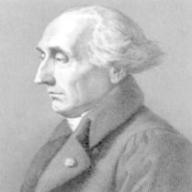decay constant (to天同)
2013-01-29 8:26 pm
According to my text book, decay constant (k) of a radioactive isotope is defined as the probability that a radioactive nucleus of the isotope in the sample would decay in one second. Also, k = ln2 / half-life. But here comes a question: if the half-life of the radioactive isotope is smaller than ln2, than k would be greater than 1, which contradicts to fact that the value of any probability cannot be greater than 1.
回答 (1)
2013-01-30 12:37 am
✔ 最佳答案
Be aware that the constant k is not a mathematical probability describing the occurrence of an event. The constant is in fact a "proportional constant" relating dN/dt (the rate of decay of radionuclides) and N (the no. of nuclides present).The equation is: dN/dt = -kN
If we transpose the terms to make the equation in the form,
-(dN/N)/dt = k
Thus, physically, k is a measure of the fractional decrease of radionuclides (i.e. -dN/N) over a time interval dt (delta t).
Hence, there is no limitation on the value of k, it could exceed unity. If we take a unit time interval (i.e. 1 s), a value of k greater than one indicates dN > N. That means the no. of nuclides decreased is expected to be more than the no. of nuclides present. This is not physically impossible. It would happen if the half-life of the radionuclide is far shorter than 1 second.
收錄日期: 2021-04-29 17:46:54
原文連結 [永久失效]:
https://hk.answers.yahoo.com/question/index?qid=20130129000051KK00094

